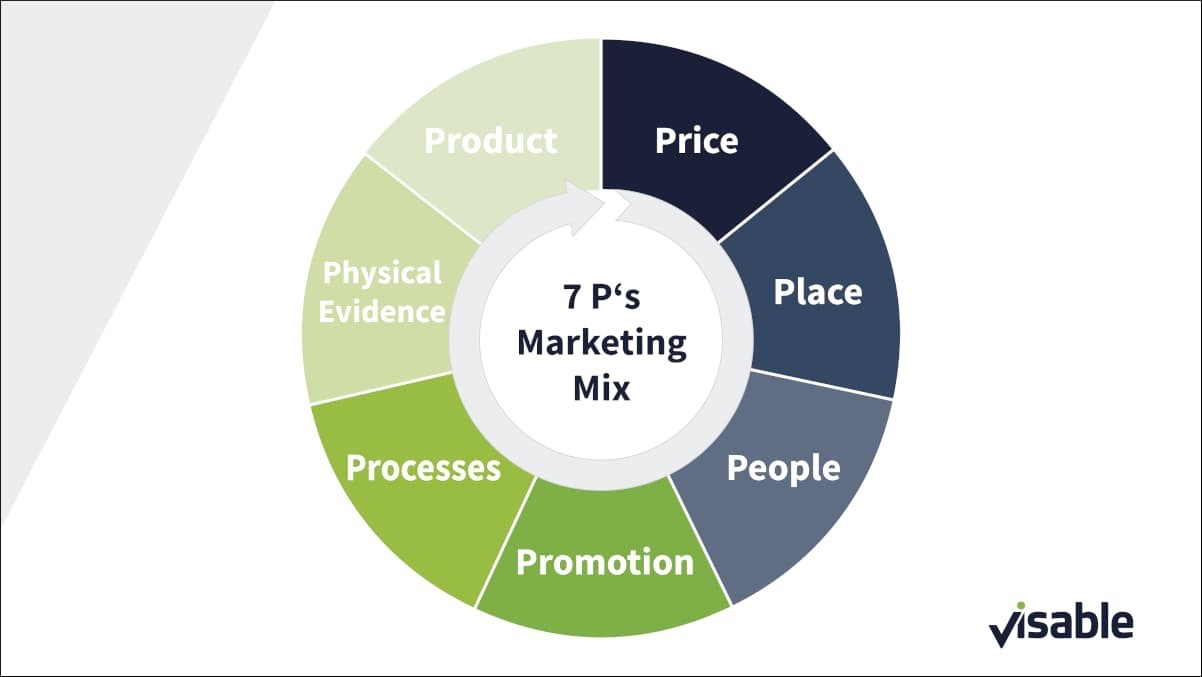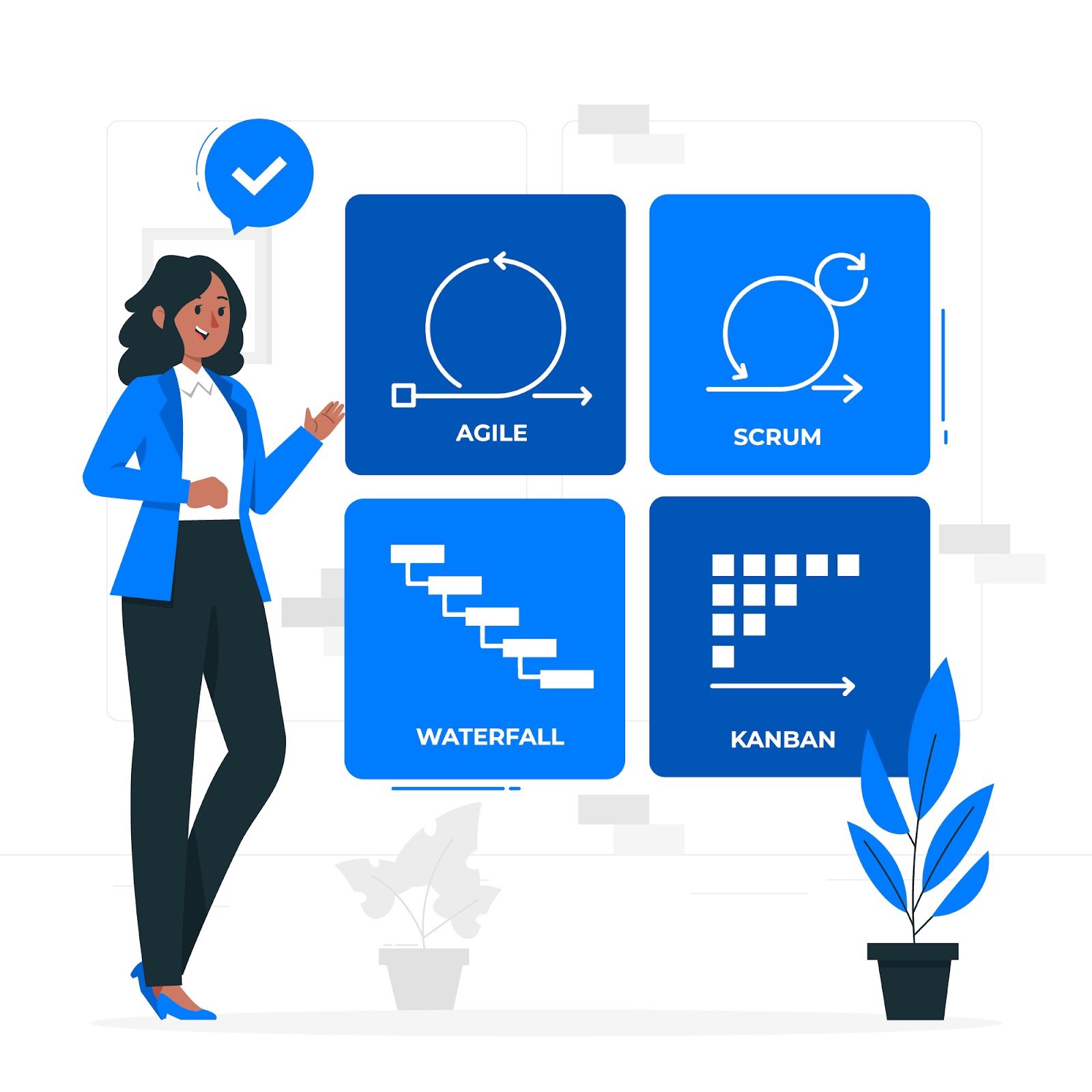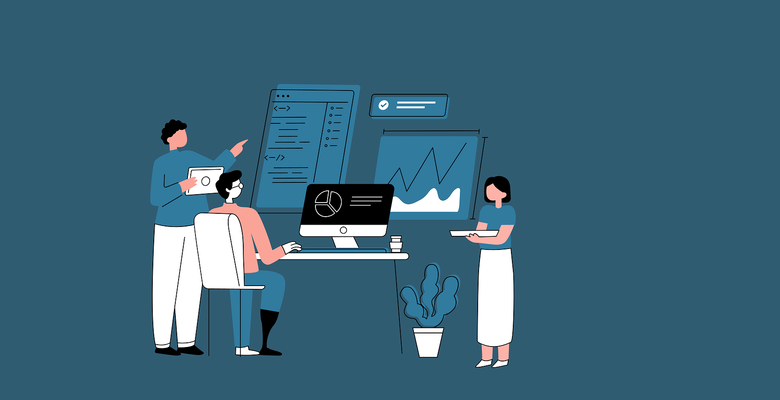"Oh, someone will take care of the marketing when our online store is ready!" - Do you know sentences like this? Or do you think similarly? Don't make this mistake! Marketing is much more than "just" promoting products or offers!
Marketing is based on the marketing mix. A simplified representation with the so-called "4P" has become established here:
- Price
- Product
- Place = Distribution
- Promotion
In addition to these four elements, there are others, such as people, processes and physical evidence.


Quelle: https://www.visable.com/de_de/magazin/wissen/7-ps-marketing
As you can see: If marketing is practiced properly in your company, the responsible colleagues have many tasks. And they are in constant communication with many departments. So if you are responsible for the design, implementation and support of an online store, you should involve your in-house marketing experts in all processes - right from the start!
Why? We explain this in the following sections.
Definition of target groups
Who does your company want to sell its products to online? This question may sound trivial, but it is crucial for many further steps. Because if you want to appeal to teenagers, you need to take different measures than if you have senior citizens as a customer group. And women sometimes have completely different requirements for an online store than men. It is therefore important that you are clear about who your current and future target groups are.
Target group analysis is a typical marketing task. This process involves working out exactly who the (potential) customers are and what special characteristics, wishes and requirements they have. The insights gained can sometimes have a significant impact on the design and functionalities of an online store.
Type of development
More and more companies and agencies prefer an agile development method (e.g. according to Scrum), but this is not a "must have". There are certainly reasons why it may make more sense to implement an e-commerce project using the classic waterfall model.
If it is still unclear which project management method should be used, it is advisable to get the marketing team on board. For example, if the colleagues are not yet sure which products and functions appear to make sense for the target groups, various hypotheses can be put forward and confirmed or refuted using an agile, iterative approach.


Optimization for search engines
In order for your online store to be found well on Google, Bing and other search engines and to achieve a good ranking for relevant terms, you need to carry out SEO (Search Engine Optimization). Among other things, it is important to establish a clean page structure, define content areas and keep the loading speed low. The right keywords must also be found and integrated into the numerous pages.
It is best to complete all of these tasks before your online store goes live in order to create a solid basis for further SEO measures. Subsequent adjustments to basic things can often only be accomplished with great effort. And they cost unnecessary time.
Content creation
Will your online shop offer dozens or perhaps hundreds of products? Should there be advice and information pages? Do you want to set up a blog or an online magazine? Be aware that all this content needs to be created and maintained!
In our experience, the effort involved in creating content, including writing good product texts, is often underestimated. So get started in good time, preferably many months before the launch date!
Headless as a basis
Should your store system be "headless" or not? This is a question with far-reaching consequences, as the separation of frontend and backend can consume a lot of resources and ultimately bring little benefit.
You should also discuss this point with your marketing department. A headless system can play to its strengths if the marketing and, in particular, the content strategy provides for content to be played out on as many systems and platforms as possible. For example, you can combine a special CMS with Adobe Commerce for this purpose. You can find out how to do this in this video:
Selection of products
Which products are placed in your online store depends on the target groups you are aiming for. It makes little sense to simply sell anything based on a gut feeling. To avoid confusing your potential customers, you should take particular care not to offer too large a range. Otherwise, there is a risk that potential customers will not be able to make a decision (keyword: jam paradox) and end up buying nothing at all.
The basic strategy, which goes hand in hand with the marketing and sales strategy, also influences the product selection. For example, if your company focuses on sustainable commerce, i.e. sustainability in e-commerce, you should only sell organic and fair trade products in your online store. You also need to pay attention to details such as green hosting: In this case, your store and all other systems must run on "green" servers.
Suitable payment methods
How do your future customers want to pay in your online store? Do you absolutely have to offer prepayment, purchase on account, PayPal, Klarna and credit card as payment methods? Are perhaps more "exotic" payment methods such as Amazon Pay or Bitcoin transfers required? Or is it enough to offer one or two selected payment methods? To answer these questions, you need to know your target groups and - if available - your existing customers in detail.
Take a close look at the key figures provided by marketing analysis and tracking tools, for example: What do your customers' paths of movement look like? Where do they enter and where do they end their "journey" in your online store? And create heat maps to see where they click the most.
Installation of tracking tools
Speaking of key figures: To enable product management, marketing and sales to analyze important key figures such as conversion rate, bounce rate, customer lifetime value or returns rate, they need appropriate analysis tools. These must be set up in your store system and, if necessary, linked to other systems. Important: When collecting and processing data, pay attention to the requirements of the GDPR, especially when it comes to sensitive customer information!
You should not do this at the last minute before the launch, but with sufficient lead time. This has the advantage that you can test the applications and plugins calmly and collect initial data. If there are problems because the data is insufficient or appears incorrect, you can adjust the settings or replace the monitoring tools.
Summary
Launching an online store is not just an IT project! Be sure to involve the marketing and sales department so that they can contribute their expertise right from the start. Keep in constant contact with your colleagues so that nothing is forgotten before, during and after the launch phase. In the next part of our guide, you will find out what you need to pay particular attention to after the launch and during the continued operation of your web store.
Do you have more questions? Don't hesitate to reach out to us - we look forward to finding solutions together that meet your needs.
Here are our contact details.








